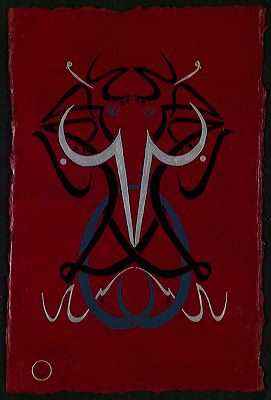
 |
|||||
| Exhibition Introduction Artists Gallery PSP Contact |
 The content of the calligraphy bears the inscription Raghba Desire Djamal Beauty Hurriyya Freedom I chose to illustrate the three notions, integrating them into a logo shape with two even sides (a classical theme in Arabic Calligraphy called "mirroring" that Sufi brotherhoods used in their illustrations and where script is duplicated to create a balanced effect that aims at better transcendence of meaning and form. I used both ink and acrylic on waxed lokta paper. I alternated different pigments that I mixed with acrylic on parts of the script. |
Koosai Kedri Kedri grew up in a Muslim Family and lived his childhood in a Jewish District in the south of Tunisia. He integrated both cultures from early age and evolved in an environment inhabited by peers from both religions. Scribes fascinated him as they performed their daily writing on cardboard and wood in mosques as well as in the Jewish temple. It became very urgent for Kedri to express the desire to see both cultures at work together, just as they did under Moorish rule in Spain. This is to a certain degree the way he found to sublimate his frustration with the difficult reality in the Middle East between the Israelis and the Palestinians. There is much in common between these two cultures at loggerheads. Kedri firmly believes that there is hope for peace and understanding between Arabic and Jewish cultures that are often presented as contrastive and fatally opposed and he strive to bring about the lexical as well as scriptural similarities that exist in both scripts. Kedri’s latest works tend to bring along Hebrew and Arabic together on the same material. This is an attempt to show the similarities and discrepancies inherent in each one of us and to invite the spectator to reflect on them. Kedri’s style is Kufi and Nastaaliq, Arabic free style with the Hebrew Rashi, Siddur and cursive, using the techniques of oil on canvas, ink and mostly Lokta or Nepal paper, mixed media on different sizes and formats. |
 |
 | ||